In order to keep the overall performance and safety standards of the motorcycle untainted, wheel bearings can’t be neglected as well. These bike parts can get worn out with time and can lead to the bike becoming less efficient and unstable. To avoid such a situation, we have put together a guide which explains in detail the use of a wheel bearing puller. The guide can be beneficial for people with a mechanical background as well as for people who want to work on the bike themselves. If you’re looking for a hands-on guide that provides tips and insights on the procedure, then look no further. With that being said, let’s get started on preparing your motorcycle for optimal performance!
What is a motorcycle wheel-bearing puller, and why do I need one?
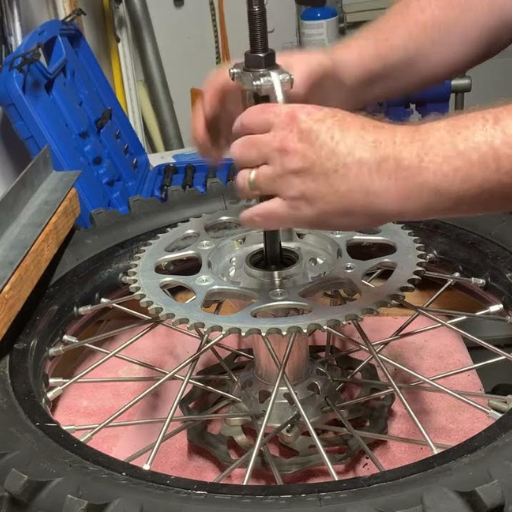
A motorcycle wheel bearing puller is a tool that is called for in the instance where a wheel bearing installation has to be made so that the wheel hub or any other component of the area remains damage free. This is vital to keep in mind because, as mentioned above, a wheel bearing is critical for a motorcycle, and replacing it requires some special considerations; otherwise, performance and safety are potential threats. The use of a bearing puller enables greater accuracy, minimizes the chances of unintentional accidents, and makes the entire task easy, whether it is just a repair service or maintenance service being sought after.
Understanding wheel bearings and their importance
Bearings in motorcycle wheels assist in controlling the vehicle, and as such, their understanding is critical to the safety of the rider, together with the vehicle, I will not tire in stressing how important it is for one to understand this. In simple terms, wheel bearings are what enable all the parts to move freely but, at the same time, take care of the weight of the motorcycle, the rider, and even the luggage. In their absence, the make would be quite rough, loud, and, beyond that, highly unsafe.
Before I delve further, I would like to impress on you a few fundamental considerations that clear the air on why wheel bearings are so crucial:
- Load-bearing capability – Bearings in the motorcycle serve the function of holding the weight of the rider and the motorcycle which means that those bearings are fitted in the wheel hub and do not allow excessive load to wear out the components of any of the parts.
- Minimizing friction – These bearings reduce the amount of friction caused between the part of the axle that rotates and the wheel that does not. This helps in ensuring that there is smooth motion hence preventing overheating or damage to other areas.
- Longevity and durability – A bearing in a wheel that is looked after properly will guarantee that the other parts, like the wheel muscle or the axle, have better durability. If the inquisitive or shabby bearings are neglected, hope for low-cost repairs is a wishful thought.
- Safety – Bear in mind that worn out and faulty wheel bearings can create wheels that are wobbly, as well as tires that are unevenly worn in the worst-case scenario, that is, the wheel may fail. Much care for safety still needs regular inspections of the vehicles to ensure proper functioning.
Knowing these elements explains the importance of wheel bearings assembles and why the use of proper tools like a bearing puller is important to make these assemblies. Keeping the wheel bearings in their best condition prioritizes comfortable, safe, and reliable rides.
Benefits of using a specialized wheel bearing puller tool
Based on my experience in the industry, I can say with assurance that employing a dedicated wheel bearing puller tool is a revolutionary tool while carrying out any repair or maintenance work. These tools are particularly used when there is a need to extract the wheel bearing without doing any harm to other components. Availability of the right tool during the process not only saves time but ensures accuracy during the operation which reduces subsequent wear or failure. In addition, steering control of a vehicle bearing puller reduces risks of mishandling and improves safety while making a repair. For someone who is serious about extending the life and efficiency of the wheel system of their vehicle, this tool is worth purchasing.
Common issues with motorcycle wheel bearings
The motorcycle wheel bearings can often have problems like loss of physical integrity, ingress of sand, dirt, and water, as well as high levels of dryness. Such malfunction often shows problems like vibrations, odd noises, irregular rotation of the wheel, and the overall stability of the bike. Standard operating procedures require regular maintenance and lubrication in order to avoid such problems and meet performance expectations.
How do I choose the right motorcycle wheel-bearing puller?
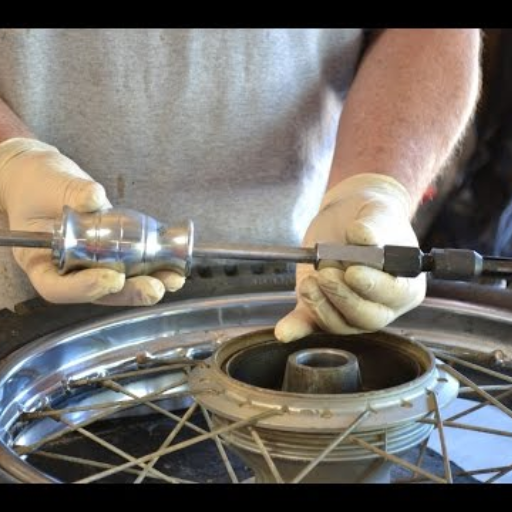
I never overlook the bearing size and type of the motorcycle while selecting a motorcycle wheel bearing puller. I look for tools that meet the dimensions and design of the said bearings so as to make removal easy. I also seek pullers made from durable materials as these will stand wear and tear and thus will guarantee great performance for longer. User-friendliness is another important aspect; I suggest you get a tool that is uncomplicated and well-embedded with instructions. Last but not least, always ensure to get pullers from top brands, which will help ensure great quality and customer service.
Types of wheel bearing pullers for motorcycles
I have had the chance to work with different types of wheel bearing pullers for motorcycles, and I would like to list them for you. Choosing the right one enables you to work more efficiently and safely while minimizing the risk of damaging your motorcycle’s parts. Allow me to present them to you, as well as their distinguishing features, step by step:
- Slide Hammer Pullers
As one of the most popular and useful wheel hub bearing extractors, slide hammer pullers work by first fastening to the slide hammer and then applying an impact pull. This type is efficient in working on bearings that have been tightly pressed in. However, remember to practice how to pull because applying excessive force will lead to the destruction of the puller and probably the bearing, too.
- Internal Bearing Pullers
These pullers provide a perfect and controlled removal of the inner races of the bearings because they phase exclusively with the inner sides of the cuffs. Where it is necessary to avoid touching the adjacent elements, these internal bearing pullers are more suitable for smaller or retracted bearings, which are available on motorcycles.
- Blind Hole Bearing Pullers
This tool is ideal if the wheel bearing is set back or placed in a blind hole. In this tool, expanders that clasp the inner surfaces of the bearing are employed for the purpose of confident removal, and then it is installed back without destruction of the housing.
- 3-Jaw Pullers
3 Jaw pullers are a very common part of car repair, allowing you to pull a bearing or a hub from a system. They are relatively easy to use, as they feature adjustable arms that latch onto the outer edge of a bearing or a hub. The design itself means you are capable of using it on a multitude of bearing sizes while minimizing the chances of damage occurring during the removal process as they evenly distribute force.
- Hydraulic Pullers
Hydraulic Pullers are the step up from manual pullers, they allow manual power to be minimized but only when the situation calls for it. Utilizing them allows for the fast removal of components that are stubborn due to rust or have older wear and tear. The downside is that they are heavier duty, hence won’t be of use while working with smaller bikes.
- Universal Bearing Puller Kits
Universal Puller Kits are a perfect complement to people who tend to work with different bearing sizes along with different types of Knew pullers, enabling you to replace those that contain multiple bearings.
Every puller has its own specificity which makes it useful for a handful of tasks. I always tell my clients to examine the bearing of their motorcycle, including type, size, location, etc. Other factors like ease of use, condition of the bearing, or precision over brute force need to be taken into consideration as well. It is quite important to choose the correct tool as not only will it save time, but you will also avoid damaging your bike during the removal process. Remember, tools are an investment!
Factors to consider when selecting a puller tool
In my opinion, when choosing a puller tool, one must pay attention to three crucial factors: Israel tools compatibility, durability, and functionality of Israel tools. Always remember that the puller must be compatible with the bearing type and size that you are working with to prevent more hassles during any removal and installation. After this, checking on the material used in making the tool is fundamental, as it assures quality and reliable performance after multiple uses. Also, while doing these, consider the purpose of the tool, its design, and ease of use– it could be anything from a light-duty task to something requiring great effort. The right tool not only makes the work easier but also takes care of your motorcycle preventing it from any further harm.
Top brands and models for motorcycle wheel bearing pullers
A few brands and models of motorcycle wheel-bearing pullers are able to consistently outperform others when it comes to durability. One such brand is Motion Pro, which has earned a reputation for supplying top-quality tools like the Motion Pro Blind Bearing Remover Kit, which is adaptive and sturdy. Also, the Pit Posse Motorcycle Bearing Puller Set is precise and easy to use and is one of the better alternatives out there. Also, among the various bearing removal kits available on the market, Tusk appears to be a favorite among users, and the Tusk Bearing Remover kit has an equally good reputation for its value for money and reliability. All these brands provide a mix of high quality, ease of use, and effectiveness, making them equally favored by hobbyists and experts.
What’s the step-by-step process for removing a motorcycle wheel bearing?
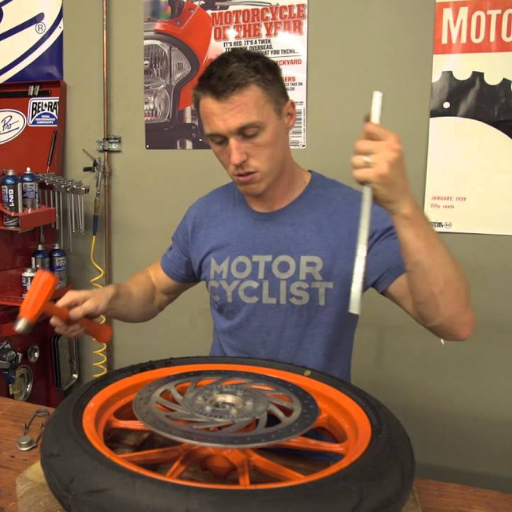
For those with little experience, taking off a motorcycle’s wheel bearing can be a simple endeavor, given the right set of tools is available. This is my approach:
- Prepare Your Tools and Workspace -First, get safety gloves, bearing puller or remover kits a rubber mallet, a wrench set, and other tools that you may need. Working in an orderly environment is imperative in order to avoid injury.
- Remove the Wheel -In order to keep the motorcycle stable, set it on a stand. Once that is done, you may proceed to take off the wheel by taking off the axle nut and sliding the axle out.
- Extract the Dust Seals -Seal pullers or flathead screwdrivers will be needed to extract dust seals that are on both sides of the wheel. Take care not to damage the seals while pulling them off.
- Remove the Bearings -The inner race of the bearing needs to be engaged with a bearing remover tool. Once that is done, proceed to tighten the tool to ensure a firm grip. Using a tool or a mallet, you may begin tapping the tool in order to take off the bearings. Keep in mind this process will take time, especially if the bearings are stuck.
- Inspect & Clean the Area -Once the bearings are out, locate the hub and start cleaning it with grease with the help of a cloth to remove any leftover dirt or residue that may have been stuck on the Hub.
- Install New Bearings if Needed – If reinstalling new bearings, always use a bearing press or a driver to gently push in the new ones. This will ensure there is no internal misalignment. Check that they fit flush inside the hub.
Apprehending the work in a phased manner guarantees proper execution. And do not forget to use the right tools such as the ones you can find from Tusk or Pit Posse – they help in dealing with anywhere near status removers a lot!
Preparing your motorcycle for bearing removal
For the bearing removal, your motorcycle would need proper tools and detail orientation. For starters, use a stand to secure the motorcycle so that there is no disruption in the course of this process. Carefully take the wheel off and make sure to either note or document the order of assembly of spacers, seals, and such. Use a cloth to clean the wheel hub area to get rid of any dirt or debris that would be in the way when trying to get rid of the bearing. Do also ensure that you have the right tools with you, such as a bearing puller or hammer and punch, to remove the bearings without any trouble. If done so, there is a high probability that everything will go as planned.
Using the wheel bearing puller to extract the bearing
In order to use a wheel bearing puller to extract a bearing, I begin by firmly affixing the tool to the wheel hub. A firm grip is of utmost importance to reduce the chances of slippage. When the puller is set, I gently screw or push down on the handle or bolt of the tool, depending on the model. This much-applied controlled force allows for the bearing to become loose and slide out without damaging other surrounding structures. All of those structures and hubs are nothing too complicated to work on and remember to periodically check progress to avoid any unnecessary damage to the hub. With the help of some useful techniques and some patience, it comes out clean without any damage to the hub, which then can be inspected or replaced easily.
How do I properly install a new motorcycle wheel bearing?
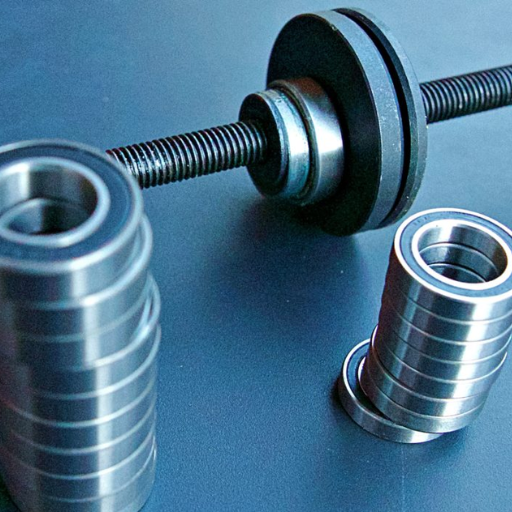
To do an appropriate installation of a new motorcycle wheel bearing, ensure before hand that the hub is clean and does not have any dirt on it. Put some grease on the bearing seating place so that it smoothly goes in. Take the new bearing and align it to the hub, now place it in the desired location by using a bearing driver or any other tool, however, ensure this tool has the same radius as the bearing so that sufficient amount of pressure is exerted. Make sure that the bearing is not tapped, as that can be damaging. After the bearing has been seated, check its alignment and ensure it’s in place. End by replacing retaining clips or seals and check that the wheel spins with no impediment.
Choosing the right replacement bearing
In selecting the replacement bearing of the right choice, I always take into consideration the quality and compatibility first. In order to provide proper functionality and wear resistance, it is imperative to select the most appropriate replacement bearing. Moreover, I strongly focus on the bearing’s material and construction, and for that, the brands or manufacturers have a good reputation for precise engineering and long-lasting products. Besides that, load capacity, speed rating, and other operational environmental aspects are taken into account as well since these features may significantly affect the bearing performance in the designated application. It minimizes failure and encourages the reliable functioning of systems. It also saves a lot of time since it is critical to do thorough research and obtain the correct bearing.
Using a wheel bearing installer tool
Skilled specialization is needed if one wants to go about using an automotive wheel-bearing installer tool. Such a tool allows for the achievement of a secure fit, which reduces the chances of damage to the bearing plus any surrounding components, and is necessary to own. To begin with, one should first make sure whether the bearing size is the same as the vehicle to which the tool is being applied. In accordance with the set of instructions provided by the manufacturer of the device, one should align the bearing in the right manner with the hub or with the housing and then start applying the required amount of pressure. The tool guarantees correct alignment of the bearing, ensuring that proper force is shared across the bearing, in essence eliminating the chances of deformation or misalignment during the installation process due to excess force being applied to a single point on the part. This approach helps not only to become more productive but also to enhance the performance of the bearing right from the start, which in turn increases its useful life.
Ensuring proper alignment and seating of the new bearing
In my experience, how a bearing is seated in the housing affects its performance and durability. In the first place, I always stress that the hubs or housings be prepared for the installation of the bearing, such as being cleaned of dirt or other foreign materials and visually checked for damage. Quality tools such as bearing presses or driver kits provide even and controlled force, which helps achieve proper alignment. Even a small shift from a linear coupling can cause the element to wear out or create vibration. I tend to work very carefully during this stage which tends to reduce failures and enhance equipment performance.
Are there any special considerations for Harley-Davidson wheel bearings?
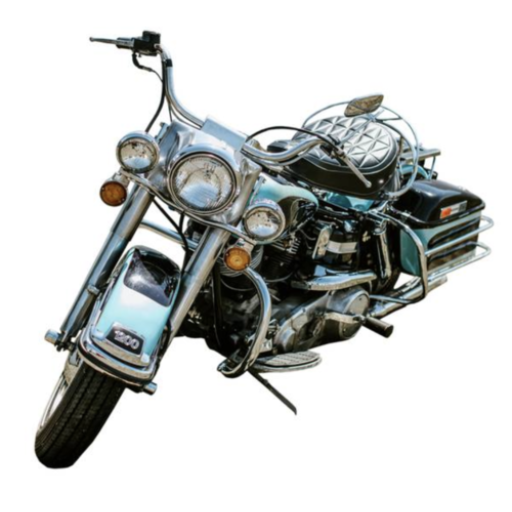
Harley wheel bearings are sensitive components due to the construction and working specifics of the bikes. of course, bearings that are subjected to high wear Road use must be sealed and properly lubricated and capable of withstanding the environment rather than a clean room easily. Also, one of the most underrated sources of an engineer having design regret is over-torquing, so one should be careful when installing. All of these measures are quite useful but would not outweigh performing regular checks and optimal servicing.
Unique features of Harley-Davidson wheel bearings
Evaluating the quality of Harley Davidson’s wheel bearings, I can honestly say that these wheel bearings exhibit great strength and marvelous engineering. These wheel bearings are made to support the harsh load conditions and stresses of Harley Davidson motorcycles, etc., that ensure reliable performance. They are tightly sealed to withstand the attack of dirt or moisture, or other pollutants, which is very important for performance under different riding conditions. Moreover, the bearings are manufactured to comply with or exceed OEM specifications, guaranteeing the quality and reliability that bikers are enjoining. In my experience, the proper combination of the assembly and regular maintenance of the motorcycle bearings also helps prolong the life of the hybrid bearing and ensures a safer and more enjoyable ride.
Recommended tools for Harley-Davidson bearing removal and installation
It’s no secret that without the right tools, removing and installing the bearings of a Harley Davidson motorcycle can prove to be quite a tedious task. Over the years, I’ve owned and used a wide range of tools, and for this particular job, I can happily recommend the following:
- Bearing Puller: these are tools that one needs while removing the bearings, but wait, one has to be cautious when using this tool because a primary bearing puller could damage the components surrounding the bearing. It is advised to buy one that fits specifically the Harley Davidson models.
- Bearing Installer Tool: this is a tool that ensures the correct fitting of a bearing by preventing misalignment. As it is long known, an installed correctly bearing will help the unit operate smoothly, thus increasing its lifespan.
- Torque Wrench: This is a piece of equipment used when putting together bolts and parts. The torque wrench helps in making sure that all the parts are put to an OEM spec and the correct amount of force is applied with this tool.
- Seal Puller: This set of tools comes in handy in making repairs and replacements of mechanical parts easy, time savvy and damage They could be used to replace of bearings and seals, making the part replacement easier
- Dead Blow Hammer: there are some parts, such as the bearings, which can barely take stress as they are too sensitive. There are tools made to assist people in being gentle with such components. During the installation, make sure to have a gentle touch with everything as you want to make sure everything is installed correctly to avoid unnecessary stress on the bearings.
- Wheel Alignment Tool: Tools in this category are generally known to be very delicate and sensitive. This ensures that after replacing and installing, they go to the correct places. So ensure all your tools are well aligned after replacement.
In my opinion, these tools serve a dual purpose — they make the work easier and cut down on blunders that would otherwise be expensive and time-consuming. They eliminate unnecessary returns and repairs that compromise the rider’s confidence in having Harley-Davidson properly prepared for the road. The only thing left is to check whether the tools you are using even fit the given bike type in advance, removing and installing parts, for example, to avoid overusing them.
What are some common mistakes to avoid when using a wheel-bearing puller?
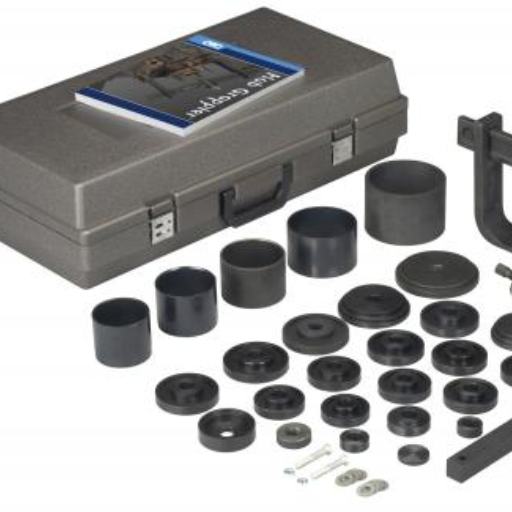
In my experience, one of the most frequent blunders is to overlook checking the tightness of the wheel before starting off. A wobbly wheel can result in the fuel nut being inaccurately twisted off resulting in damaging the hub or the bearings. I also find another blunder in that too much force is employed in the puller. It can exert pressure on the component unnecessarily and, worse still, on the wheel assembly itself. It is also unbendingly clear that a puller of appropriate size and type for the relevant bearings is employed, as the use of unfit ones would result in poor alignment or uneven forces on the wheel assembly. More often than not, not lubricating the puller threads, as well as the bearing area, stands out as one of those novice errors that ought to be avoided because it unnecessarily complicates the task and introduces additional friction. Adopting the right procedure and being patient allows one to carry out the task without much hassle and prevent any damage to the bicycle.
Improper tool selection and usage
Always refer to the manual or guidelines provided by the manufacturer of your bike, as this will avoid incorrect issues of improper tool selection and tool usage. A high-quality bearing puller for your type of bearings must be used as it will guarantee accuracy and lower chances of damage. In addition, maintain calmness and use firm yet gentle and unchanging force when using the puller, as this can be extremely expensive to use with increasing strength. Proper lubrication of the tool threads and surfaces that come into contact with each other is necessary in order to reduce friction and make it more comfortable to use. By observing these practices explained above, you will guarantee safety, speed, and absence of damage during the repair process.
Damaging the wheel or surrounding components
When it comes to ensuring that the wheel or its surrounding components are not damaged, I always prioritize carefulness. One common error people make is providing too much torque on removal or installation, which can distort or even break the rim of the wheel. That is why I do not hesitate to look over the wheel and its surroundings as a rule – such inspection allows me to identify the weakest points of a problem without aggravating the damage. Furthermore, I make it a practice for myself to utilize handheld power tools that are relevant to the project and to ensure that the parts being installed are in alignment during every phase. It has always been the case that having a systematic approach to the activity has saved me money from expensive repairs and guarantees that the wheel is not damaged.
Neglecting proper maintenance after bearing replacement
Incorrect maintenance after the bearing replacement can greatly affect the life of both the bearing and the wheel assembly. After installation, there is the need to monitor the bearing for signs of wear, adequate lubrication, and proper torquing. Neglecting these necessary maintenance steps could result in very high friction, excessive heat, or failure of parts when loaded. With regular maintenance, the performance and life of the whole system are preserved.
Can I use a wheel-bearing puller for other motorcycle maintenance tasks?
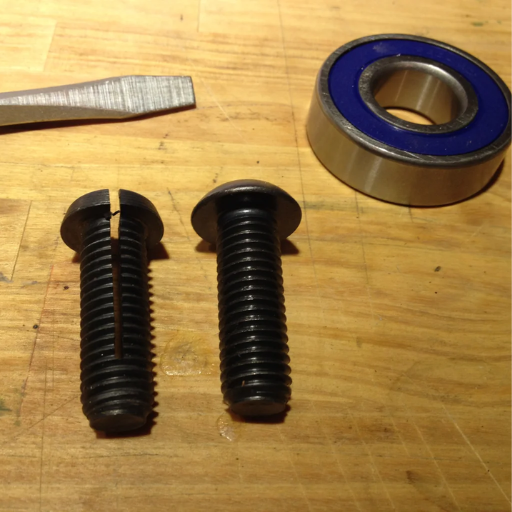
In my view, a wheel-bearing puller indeed has some motorcycle maintenance applications outside its primary function, but such applications are quite narrow. For most parts, it is great for removing or manipulating other press fit parts such as some collars o bushing from my experience. However, make sure to use it properly and only in conjunction with the specific part you intend to use it with. Using the incorrect tool for the task can result in the tool and the part getting damaged, further causing unwanted repairs. Always reference your motorcycle’s service manual if uncertain, or just use a tool designed for that particular job. This method ensures that accuracy is achieved while preventing the chances of getting unintended issues.
Adapting the tool for different bearing types and sizes
Altering a wheel bearing puller for alternate types and sizes of bearings is done by selecting the suitable attachments or configurations that fit the dimension of the bearing. High grade bearing pullers are delivered with rotatable arms or removable jaws to be able to suit a good number of sizes, thus the bearing will be held in place without damage to it. There are also some pullers that are made to efficiently deal with turning bearings that have the use of sealed bearings, which need more caution while removing them. Always position the tool correctly in order to apply the necessary force without the risk of the tool getting out of shape or breaking.
Reference
- YouTube: How-to Remove Motorcycle Wheel Bearings – A video tutorial by Motion Pro on using a wheel-bearing remover set.
- YouTube: Motorcycle Wheel Bearing Replacement – A video guide on changing wheel bearings, specifically for Honda motorcycles.
- Instructables: $2 Motorcycle Wheel Bearing Puller – A step-by-step guide with pictures on using a wheel-bearing puller.
Frequently Asked Questions (FAQs)
Q: What is a motorcycle wheel-bearing puller, and why do I need one?
A: A motorcycle wheel bearing puller is a specialized tool designed to remove and install wheel bearings on motorcycles. You need one to safely and efficiently replace worn or damaged bearings without damaging the wheel hub or surrounding components. This tool is essential for proper maintenance of your motorcycle’s wheels, ensuring smooth rotation and optimal performance.
Q: How do I use a wheel bearing puller to remove bearings from a motorcycle wheel?
A: To use a wheel bearing puller, first remove the wheel from the motorcycle. Then, insert the puller’s jaws behind the bearing race and tighten the central bolt. As you turn the bolt, it will gradually extract the bearing from the wheel hub. For inner bearings, you may need an inner bearing puller or a blind bearing puller to reach and remove them effectively.
Q: What are the different types of motorcycle bearing pullers available?
A: There are several types of motorcycle bearing pullers, including 1. Standard bearing pullers, and 2. Inner bearing pullers 3. Blind bearing pullers 4. Gear pullers (which can sometimes be used for bearings) 5. Bearing separator tools 6. Wheel bearing remover and installer kits: Each type is designed for specific bearing removal scenarios and wheel configurations.
Q: Are there specific tools for Harley Davidson motorcycle wheel bearings?
A: Yes, there are specialized tools for Harley-Davidson motorcycles. Many tool manufacturers offer Harley-specific wheel-bearing tool kits designed to work with the unique dimensions and configurations of Harley Davidson wheels. These kits often include adaptors and attachments tailored for various Harley models, ensuring proper fit and function during bearing removal and installation.
Q: How do I remove a stubborn or seized wheel bearing?
A: For stubborn or seized wheel bearings, you may need to use a combination of tools and techniques: 1. Apply penetrating oil and let it soak 2. Use a bearing separator to break the bond between the bearing and hub 3. Employ a slide hammer with your bearing puller for added force 4. Consider using heat (carefully) to expand the metal and break the seizure 5. As a last resort, you might need to cut or drill the bearing, but this should be done carefully to avoid damaging the wheel hub
Q: What’s the difference between a wheel bearing remover and an installer?
A: A wheel bearing remover is designed to extract old bearings from the wheel hub, while an installer is used to press new bearings into place. Many tool kits combine both functions into a wheel bearing remover and installer set. The remover typically uses a pulling action to extract the bearing, while the installer uses a pressing action to seat the new bearing properly without damaging it.
Q: How do I know if I need to replace my motorcycle’s wheel bearings?
A: Signs that you need to replace your motorcycle’s wheel bearings include: 1. Unusual noises (grinding, humming, or clicking) coming from the wheel 2. Visible play or wobble in the wheel when lifted off the ground 3. Rough or notchy feeling when rotating the wheel by hand 4. Visible damage or corrosion on the bearing or seal 5. Excessive heat coming from the wheel hub after riding Regular inspection of your wheel bearings during maintenance can help catch issues early.
Q: Can I use a general automotive bearing puller for my motorcycle?
A: While some automotive bearing pullers may work for motorcycle wheel bearings, it’s generally recommended to use tools specifically designed for motorcycles. Motorcycle-specific bearing pullers and tool kits are tailored to the smaller sizes and unique configurations of motorcycle wheels. Using the correct tool ensures proper fit, reduces the risk of damage, and makes the job easier and more efficient.
